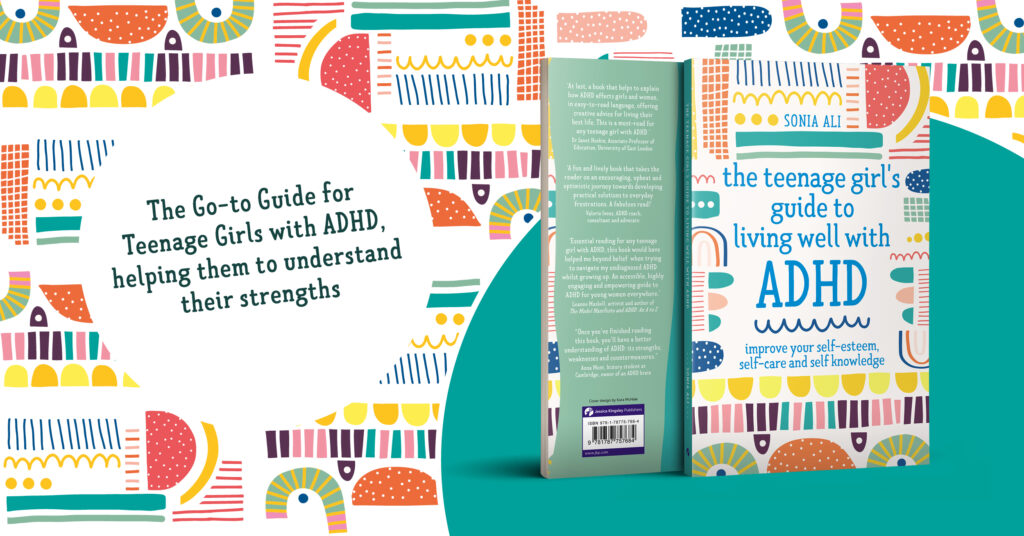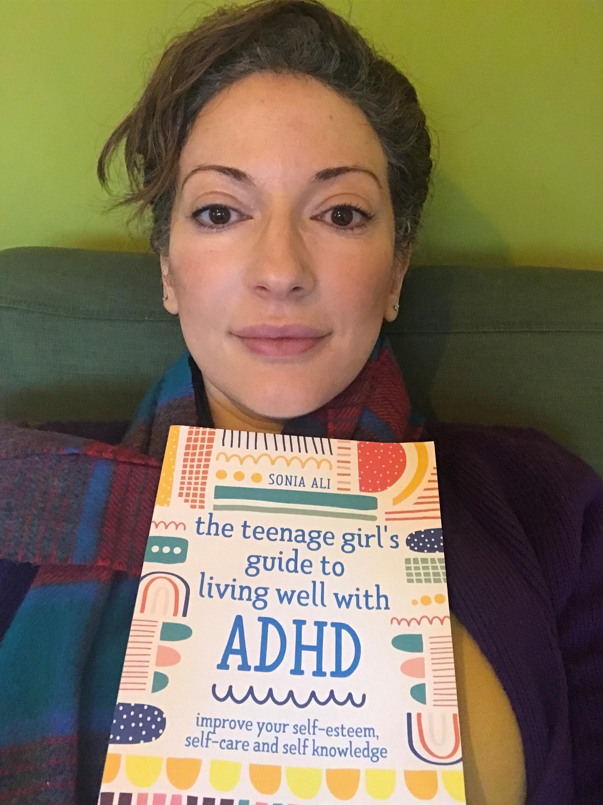
The Teenage Girl’s Guide to Living Well with ADHD
Here’s an exclusive extract from Sonia Ali’s empowering new book, The Teenage Girl’s Guide to Living Well with ADHD.
DAYDREAMING
Living in LA had changed Melissa. She looked different, she felt different. It had been four months since she had been back home and as the train stopped at the platform, her heart began to thump. What if they had not forgiven her? What if he’d moved on? (Becky Freeman, June 2019).
This is not the opening paragraph of a novel by Becky Freeman or a scene from a film. If you Google ‘story about Melissa by Becky Freeman’, you will not come up with any results. This is a scene from the plot of a week-long daydream that Becky Freeman has been completely invested in. This daydream includes a dramatic love story and moment of such heightened excitement and sadness that Becky has sometimes cried real tears.
Can daydreaming be good for you?

Daydreaming is linked to strong creative thinking skills – a daydreamer needs an active imagination to develop the technicolour stories that play out in their head. Some types of daydreaming may help people prepare for future situations by helping them visualize and enact possible outcomes. Other daydreams are pure indulgent fantasy that entertain.
“I daydream quite a lot when I am doing anything that’s a bit dull. It also helps me do tasks that don’t require a lot of mental focus like washing dishes.”
Maladaptive daydreaming
Many girls with ADHD daydream a lot. These daydreams could be action-packed adventures that follow complicated plotlines over days or weeks. (Some people may return to familiar stories again and again over many years.)
When your daydreams are particularly absorbing, you may end up hyper-focusing on the daydream and become addicted to this emotionally charged alternative world you have created. Hyper-focusing on a daydream requires you to completely tune out of your external reality for a long time and this can leave you feeling disconnected when your mind returns to the external reality again.
When daydreaming is really intense, it can be very hard to switch it off. You may spend a lot of time on your own, so that you can daydream, but afterwards you may feel strange and anxious.
The term maladaptive daydreaming describes daydreaming that becomes excessive and compulsive to the point that it affects your life negatively.
Signs of maladaptive daydreaming include:
- daydreaming for several hours during the day, often during the week
- difficulty controlling the urge to daydream at various point of the day
- replacing or preferring daydreaming interactions to real-life interactions.
If you have ADHD, especially the inattentive presentation, you may recall times when your daydreaming could be described as maladaptive.
Activity for reflection
- Do you think that you daydream too much some days?
- When are you more likely to daydream the most? (When you are bored? Tired? Stressed? Sad?)
- Do you use daydreaming as a comfort and a way of disassociating from real-life problems?
Why you may daydream too much at times
Excessive daydreaming can be a buffer against feelings of anxiety or worry or low self-esteem. A daydream could be providing temporary mental relief from how you feel in real life, but whatever is causing you to feel anxious, hurt, worried, low or unmotivated will not vanish if you daydream. You need to take concrete actions and find other coping mechanisms that allow you to process your feelings about your reality in a healthy way.
‘The Teenage Girl’s Guide to Living Well with ADHD’ by Sonia Ali is available now.
If you would like to read more articles like this and get the latest news and offers on our books about neurodiversity, why not join our mailing list? You may also be interested in our Facebook page or Twitter page.